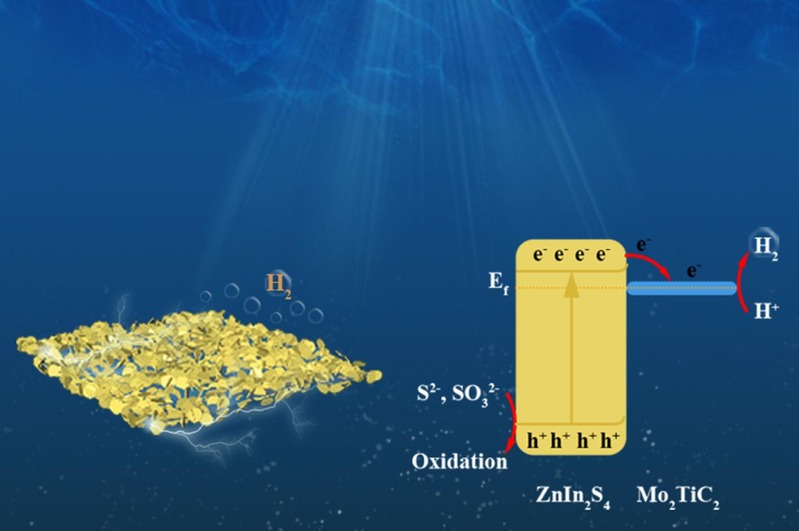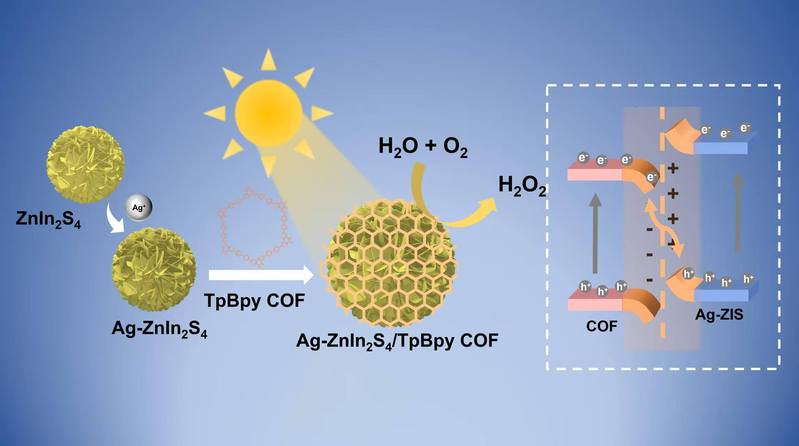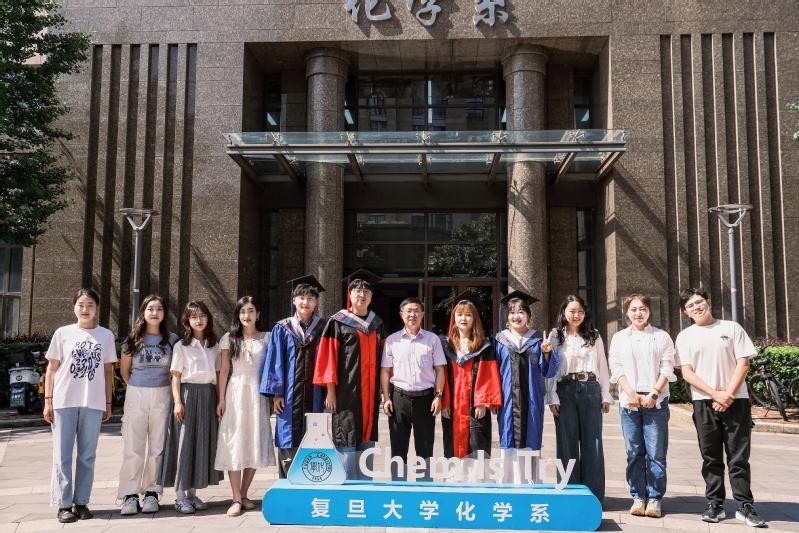As a novel two-dimensional (2D) material with superior electrical conductivity, Mo2TiC2 MXene has been synthesized and applied in the fields of supercapacitors, lithium batteries, and electrocatalysis. Moreover, Mo2TiC2 MXene exhibits significant potential in photocatalytic processes due to its excellent light absorption and electron acceptance properties. Consequently, a few-layered Mo2TiC2 MXene with a large lamellar structure was designed and synthesized using etching and intercalation methods. Based on this, a tightly-bound ZnIn2S4/Mo2TiC2 binary composite was then fabricated through an in situ solvothermal process. Under simulated sunlight irradiation, the optimal ZnIn2S4/10 %Mo2TiC2 composite exhibited an outstanding photocatalytic hydrogen evolution (PHE)rate of 4.3 mmol⋅g- 1⋅h- 1 (using 10 mg of catalyst), which was 3.8 times higher than that of ZnIn2S4 and also surpassed the activity of ZnIn2S4 with 1 % Pt as co-catalyst. According to in situ X-ray photoelectron spectroscopy (XPS) and density functional theory (DFT) calculations, the enhanced PHE activity was attributed to the formation of a Schottky junction with the tightly-bound interface between ZnIn2S4 and Mo2TiC2, which effectively facilitated the transfer of photogenerated electrons and inhibited electron recombination in the composites. Additionally, all the composites showed improved light absorption intensity compared to pure ZnIn2S4, which also contributed to the enhanced PHE performance. This work demonstrated the superior activity of few-layered Mo2TiC2 MXene as a noble-metal-free co-catalyst, and its large lamellar structure made it an ideal substrate for further incorporating with other semiconductors to construct high-performance MXene-based heterostructures.

 Wei-Lin Dai Group
Wei-Lin Dai Group


